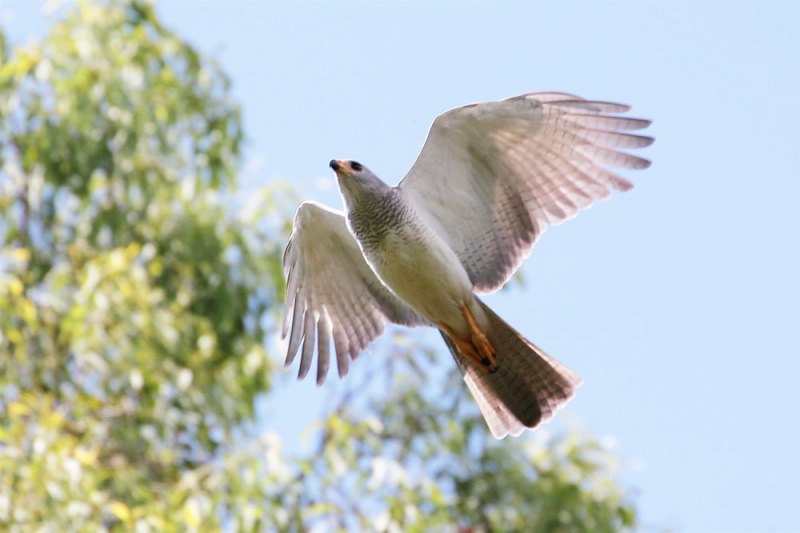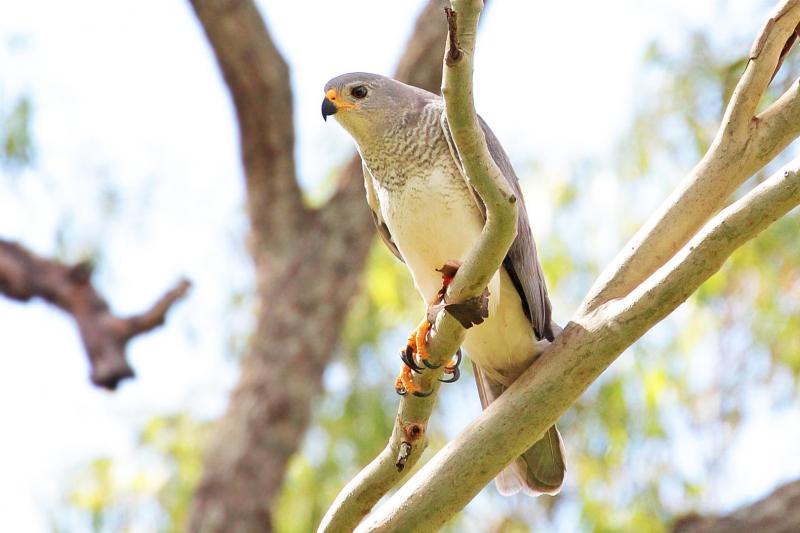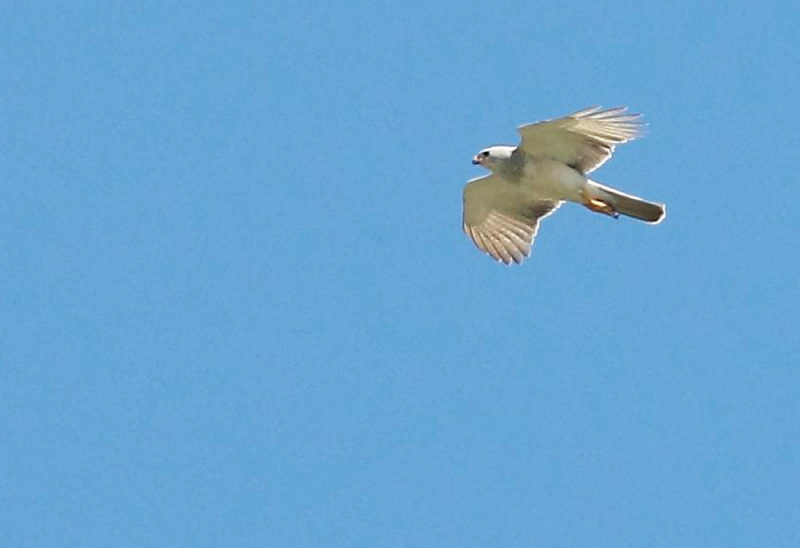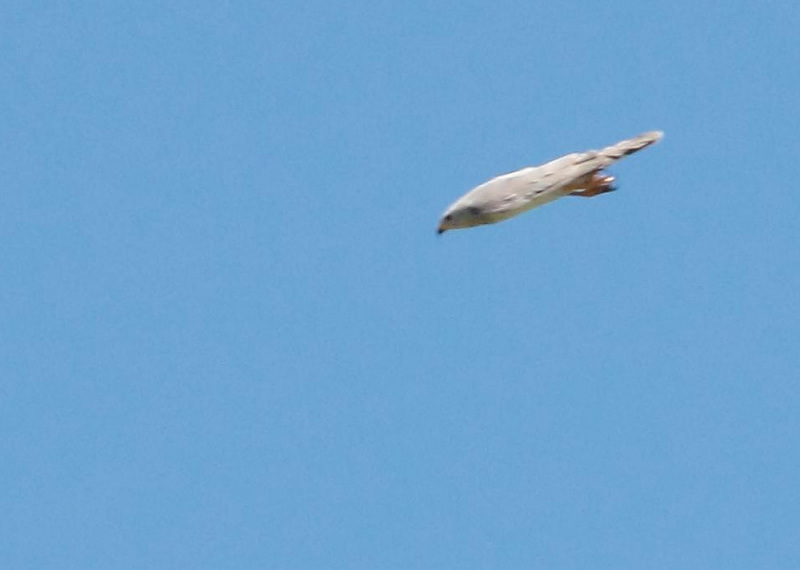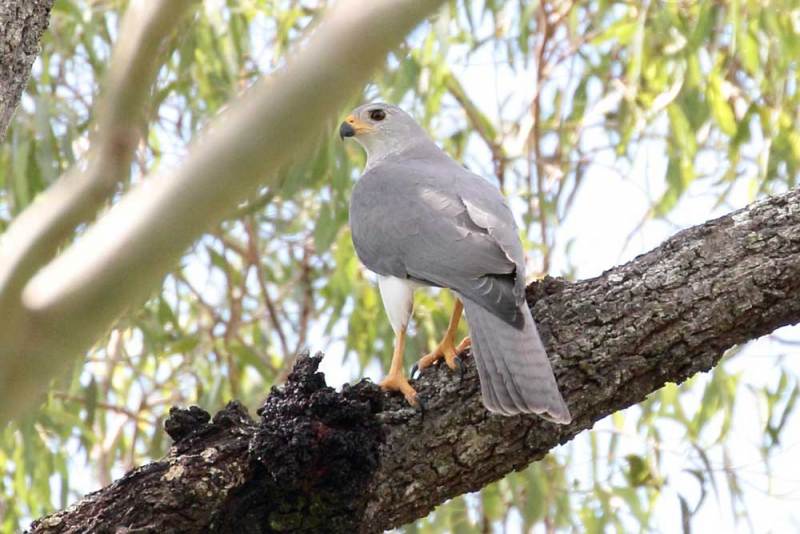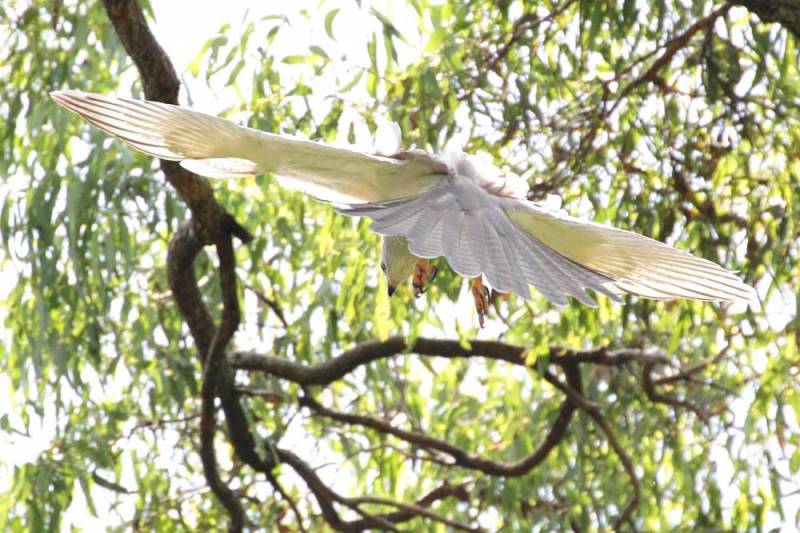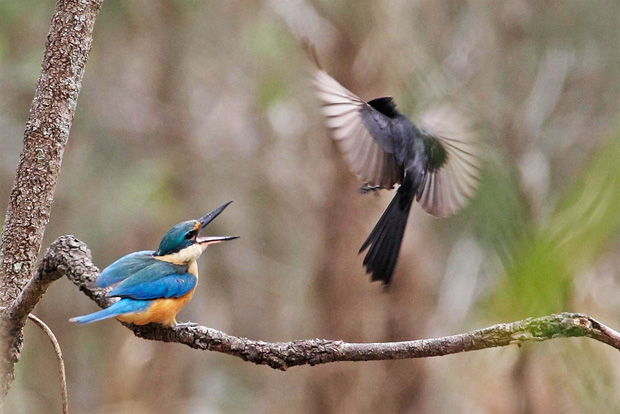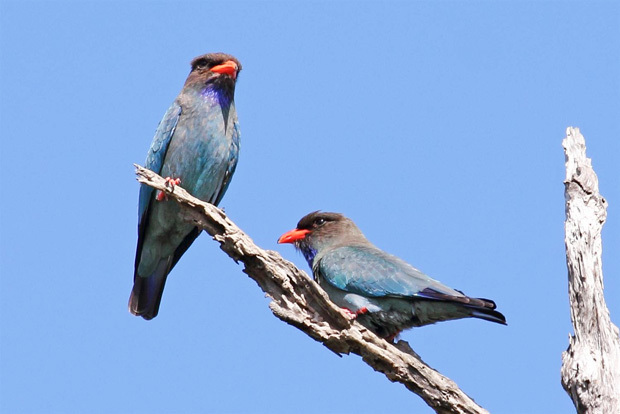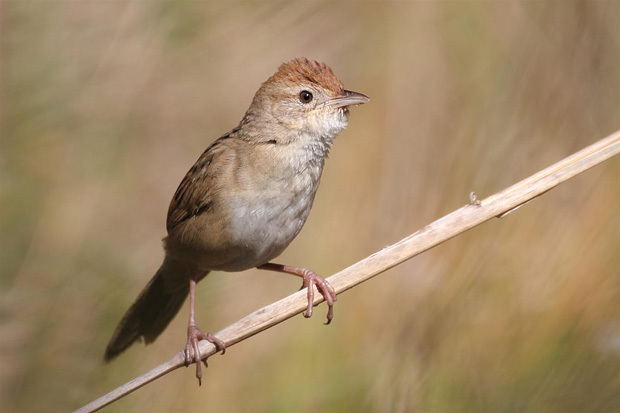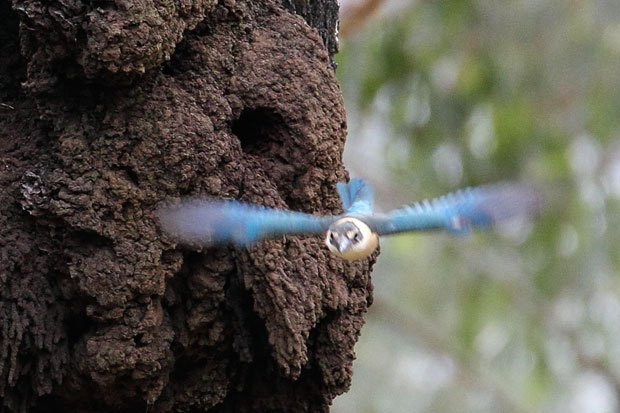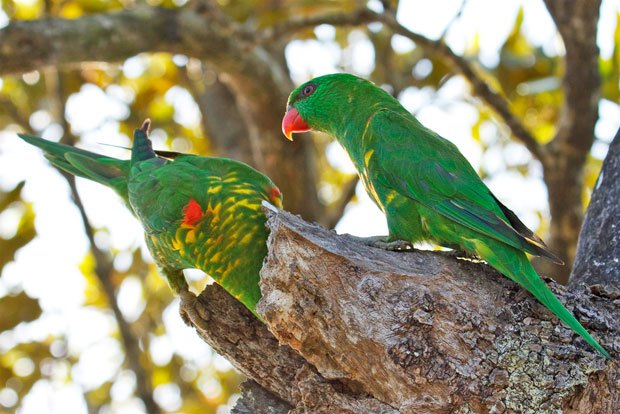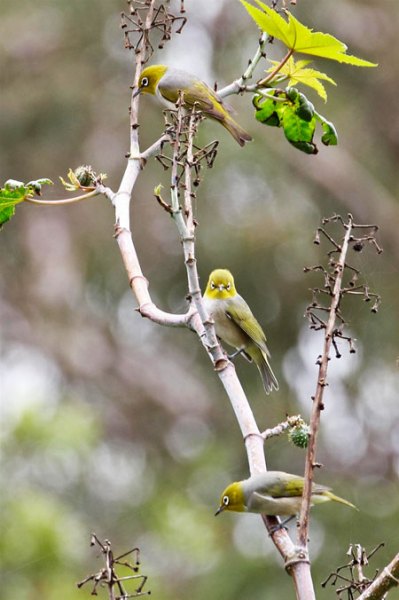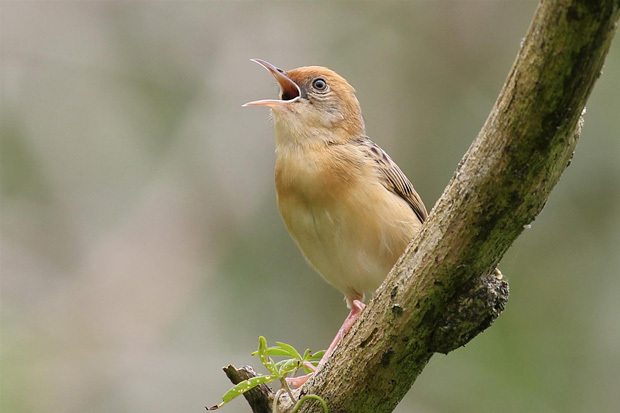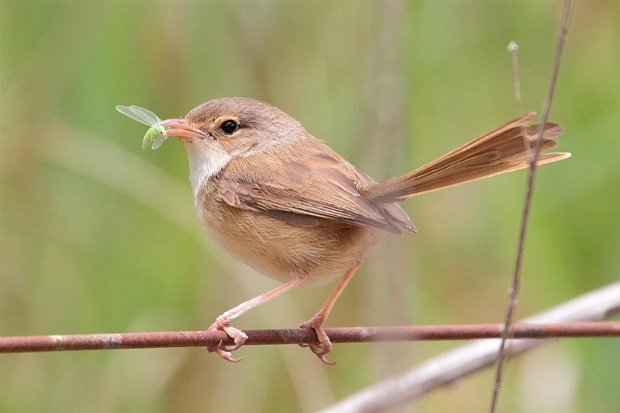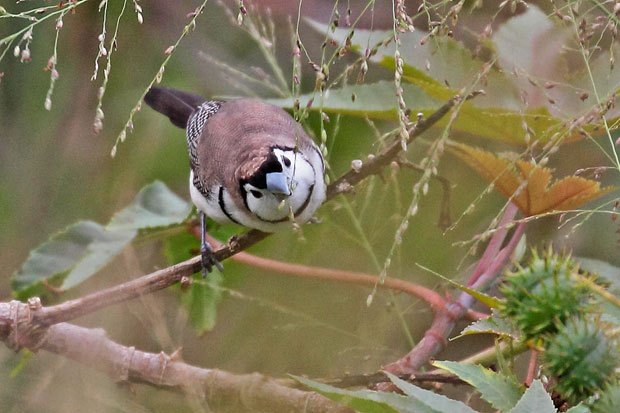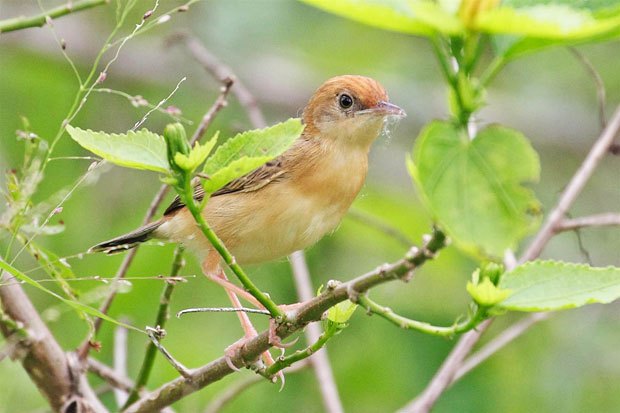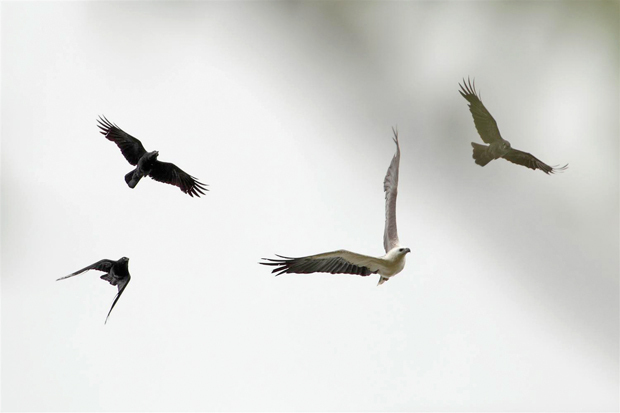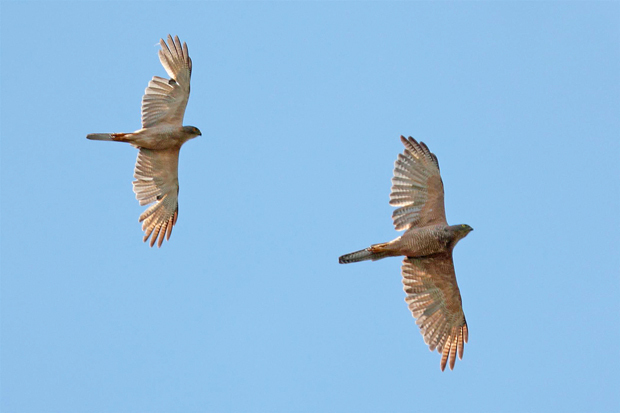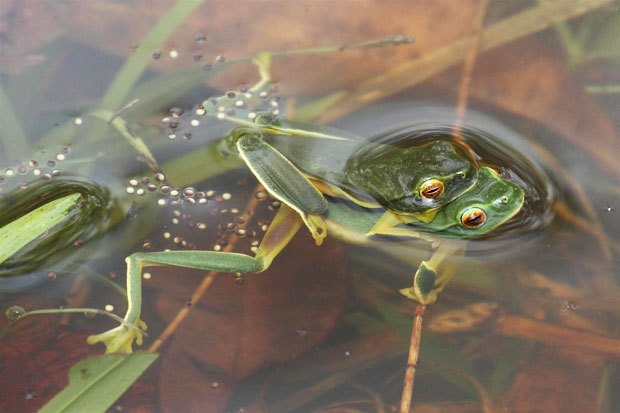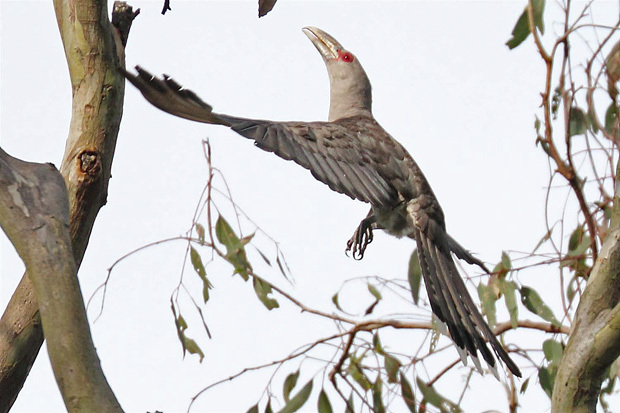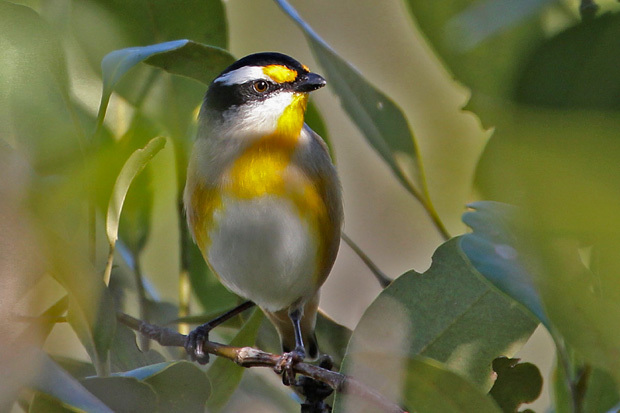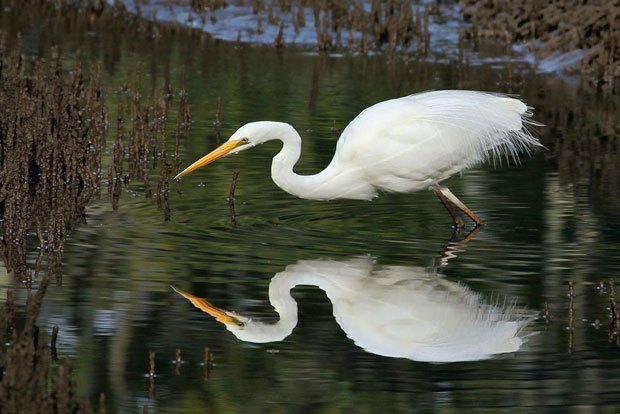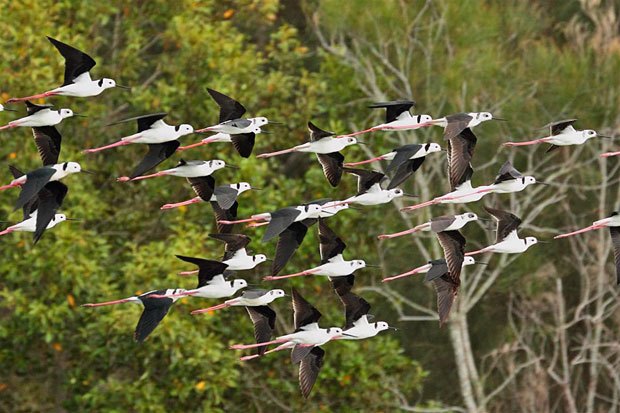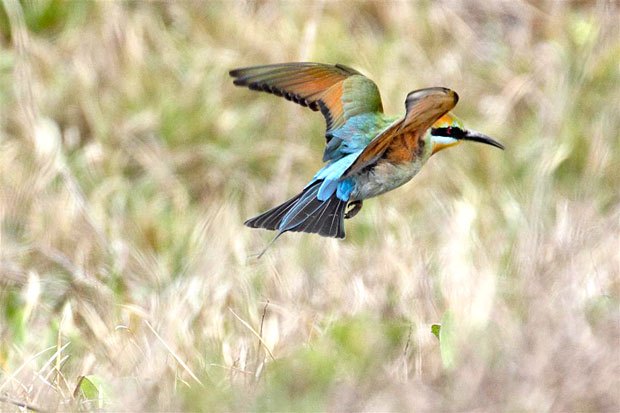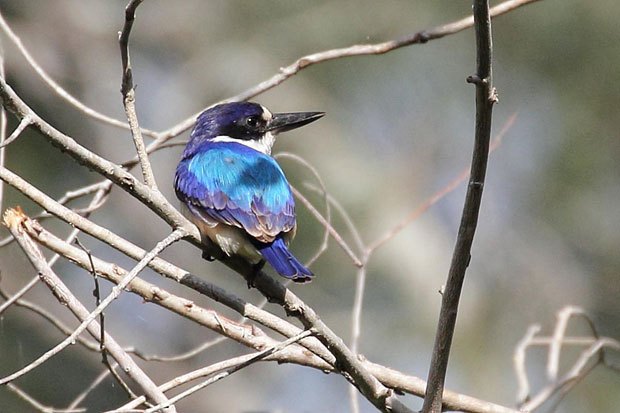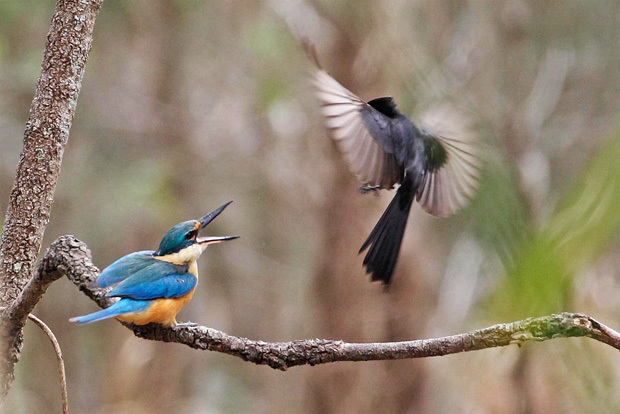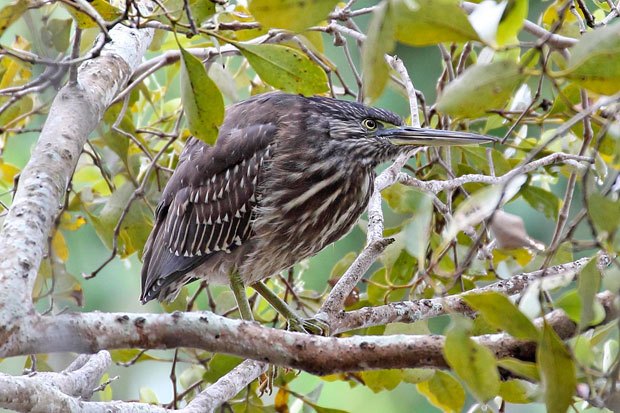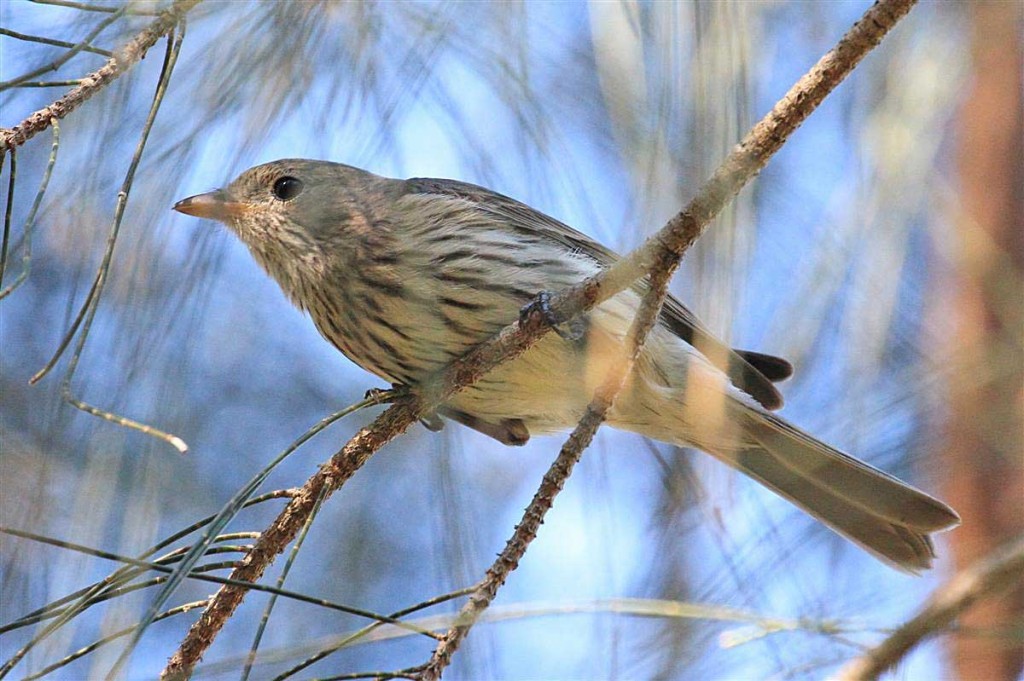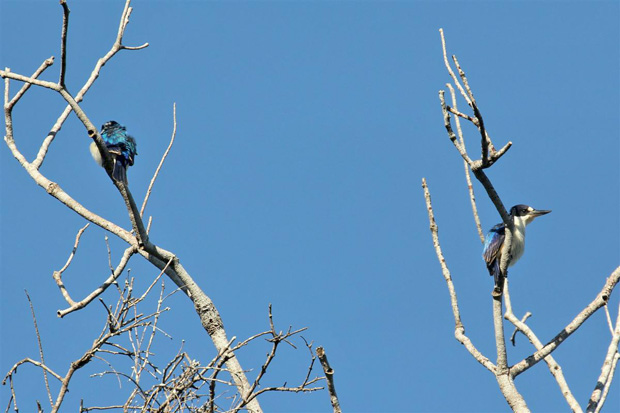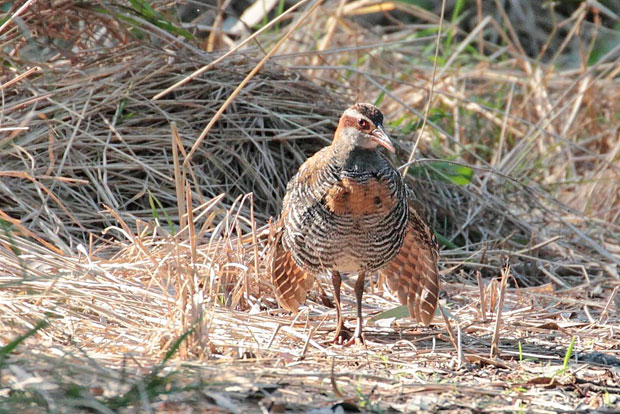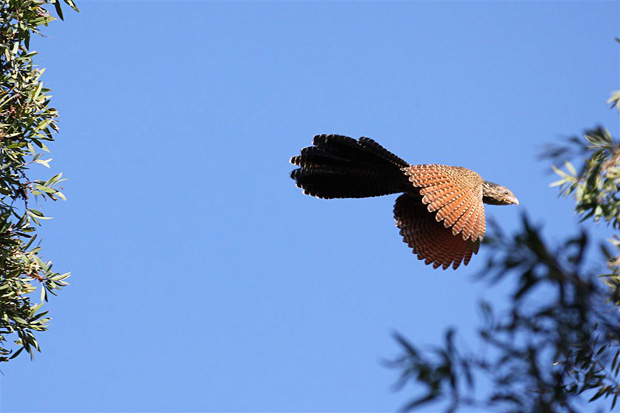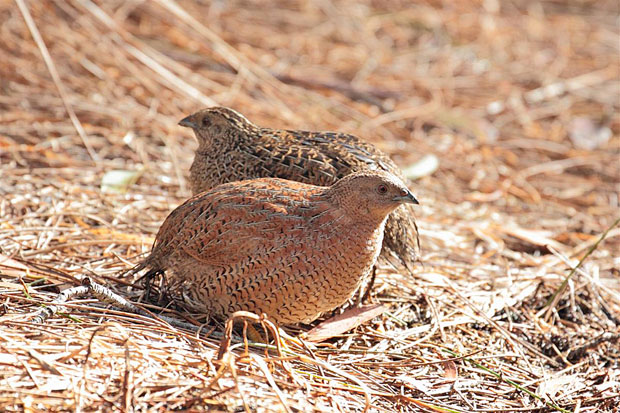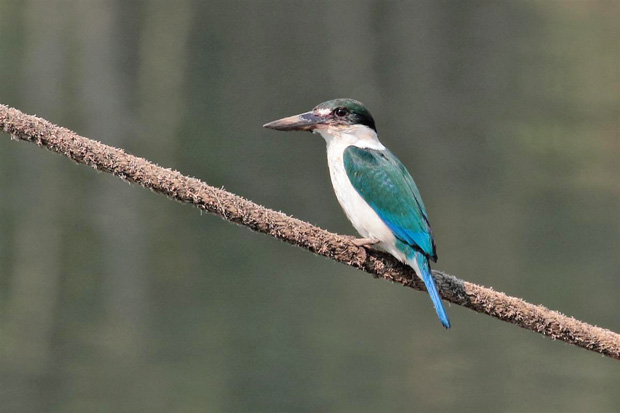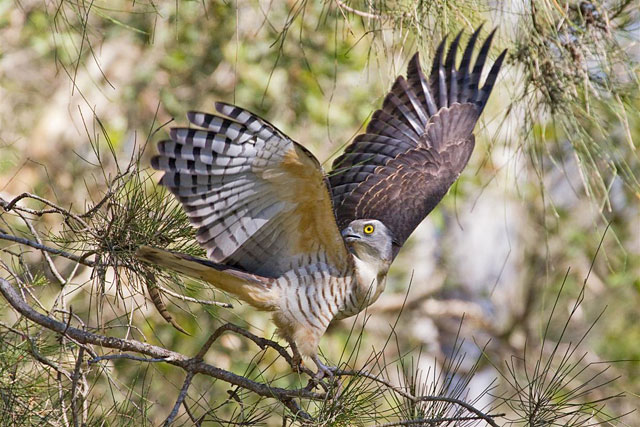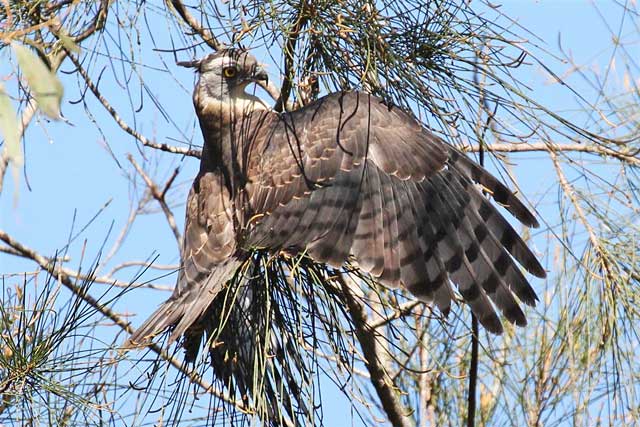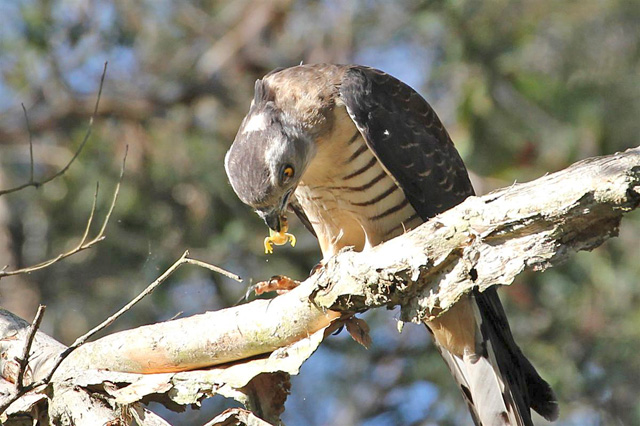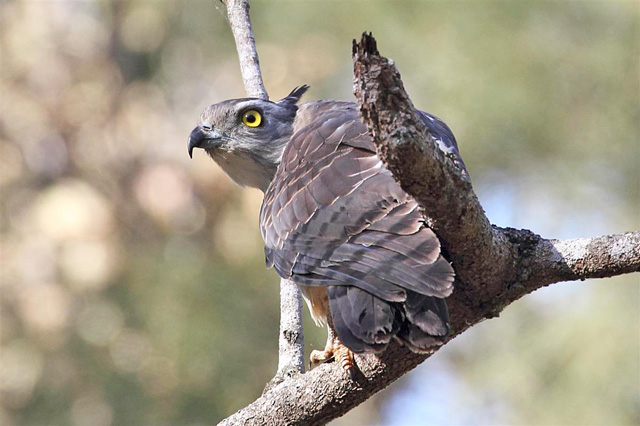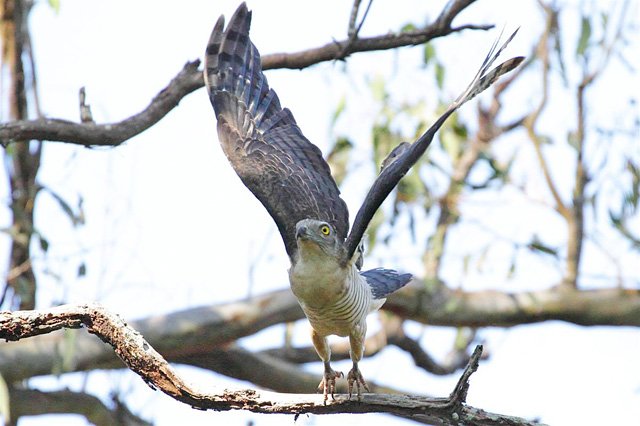Some wonderful images of a Grey Goshawk (Accipiter novaehollandiae) taken by Mike Peisley at Boondall on the edges of Brisbane.
Tag Archives: Boondall Wetlands
Beautiful barred raptor
I’m currently writing the Queensland section of the NatureWatch feature for Wildlife Australia, the magazine of the Wildlife Preservation Society of Queensland. For the Winter 2012 edition I enjoyed putting some words together to accompany more exciting images of a special raptor by my brother-in-law Mike Peisley.
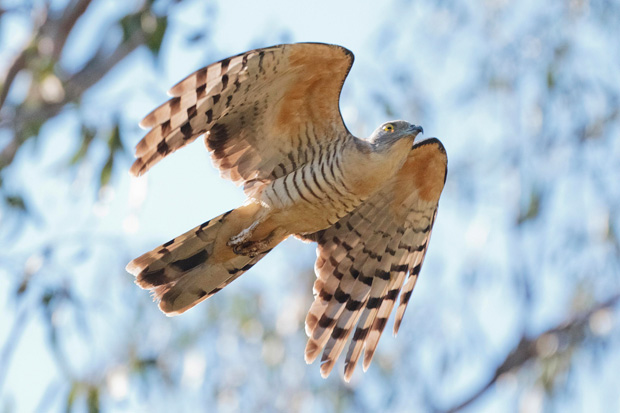
The beautiful, bold banding and rufous wash of the Pacific Baza. Boondall wetlands, Brisbane. Photo courtesy Mike Peisley
One of Australia’s most beautiful birds of prey can be seen travelling through urban areas of south-eastern Queensland from early winter to mid-spring. The Pacific Baza or Crested Hawk (Aviceda subcristata) is a striking animal, with bright yellow eyes, crest and a colourful profusion of brown, blue-grey and white feathers. It is distinguished from other Australian raptors by its boldly barred breast, broad rounded blue-grey wings wit barred flight feathers and the broad black band at the end of its tail.
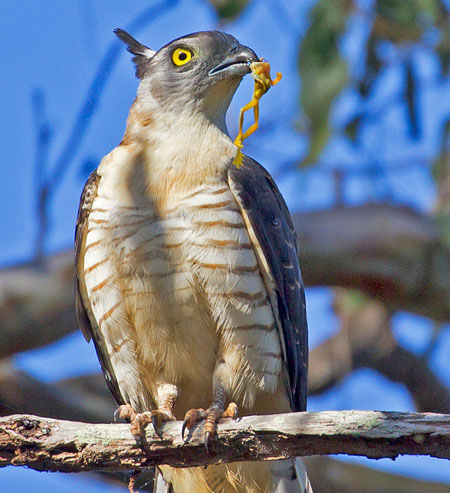
Pacific Bazas are omnivorous, mainly eating tree-frogs (such as this Graceful Treefrog) and insects, however they will also catch small birds, snakes and lizards and will eat fruit, such as figs. They can sometimes be seen clambering around in the foliage to snatch prey. Photo courtesy Mike Peisley
Pacific Bazas can be secretive and difficult to spot through much of the year. However, outside their breeding season they range widely, often in groups, from upland to lowland areas in south-eastern Queensland. Parties of up to 30 birds have been observed from March to December.
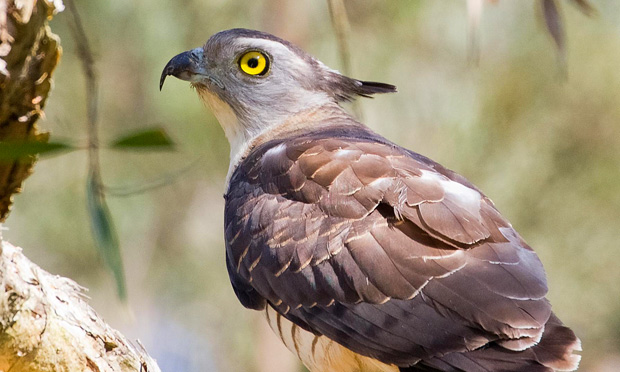
Bazas have magnificent eyes. Red oil drops in the eyes assist them to discern green prey, such as the frog being consumed in the image above. For more on vision in birds, see well-known naturalist Ian Fraser’s article on page 7 of Gang Gang, the newsletter of the Canberra ornithologists. Photo courtesy Mike Peisley
It is thought that the seasonal movement of Pacific Bazas may be a response to variations in the numbers of their favoured prey, which includes insects such as preying mantids, stick insects and large grasshoppers. As these are often less common during winter at higher altitudes, this may explain the movement of Bazas to the coast, where there is more to catch and eat. Where to see them Pacific Bazas can be seen in many types of habitat, from rainforest to suburban gardens, however they not usually spotted in treeless or open areas. When moving in groups in the non-breeding season they may be seen in backyards and have even been spotted on clotheslines and on the balconies of multi-story buildings. Bazas are highly manoeuverable birds that chase and pursue their prey in the outer foliage of trees and shrubs. On fine, warm days single birds, pairs or small parties soar overhead and their distinctive call — a mellow double whistle described as ‘whee chiu’ (the first note rising and the second falling in pitch) can be heard drifting down form the skies overhead or in local patches of bush. As spring approaches keep an eye out for mated pairs soaring together and performing acrobatic, tumbling aerial displays.
(With thanks to Greg Czechura.)
To see more of Mike’s Baza images please visit my September 2011 post.
More great Boondall images
Some new images by Mike Peisley, all taken in the Boondall wetlands. Mike’s patience in getting to know this area and the behaviour of its wildlife continues to pay off with some really wonderful images.
All images copyright Mike Peisley.
Boondall Birds
Some more photos from my brother-in-law, Mike, all taken at Boondall Wetlands, Brisbane. Think I need to convince him to set up his own blog.
Pacific Bazas
More photos from friends! Mike Peisley’s patience in watching Pacific Bazas at Boondall has paid off with some wonderful images, which he has generously allowed me to post.
Pacific Bazas, or Crested Hawks (Aviceda subcristata) visit Brisbane in numbers during early winter to mid-spring. These striking raptors have a distinctive ‘whee chu’ call, which is often heard during breeding season.
The sole Australian representative of a hawk group known as the Cuckoo Falcons or Lizard Hawks, Bazas feed in treetops, where they snatch small prey such as frogs and insects such as phasmids (such as Mike captured here). Their eyes contain particular oil drops that allow them to spot green prey among foliage.
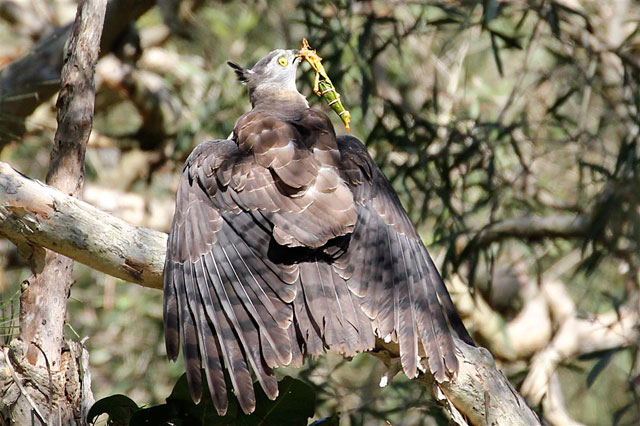
During the breeding season, Bazas call, soar and carry out dramatic display flights. Outside the breeding season, they can be secretive and difficult to spot.
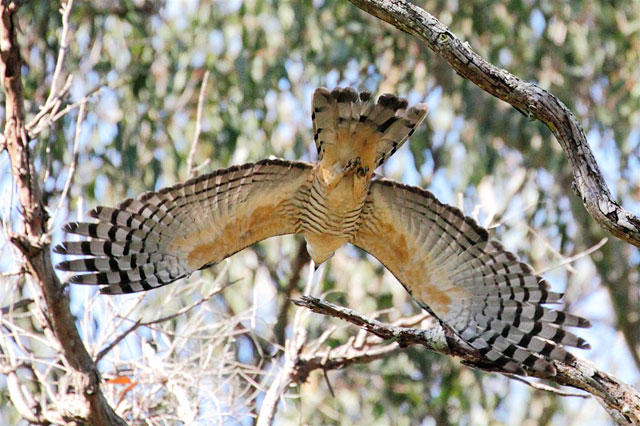
For more information on these birds, see the Queensland Museum’s information sheet (PDF download).

